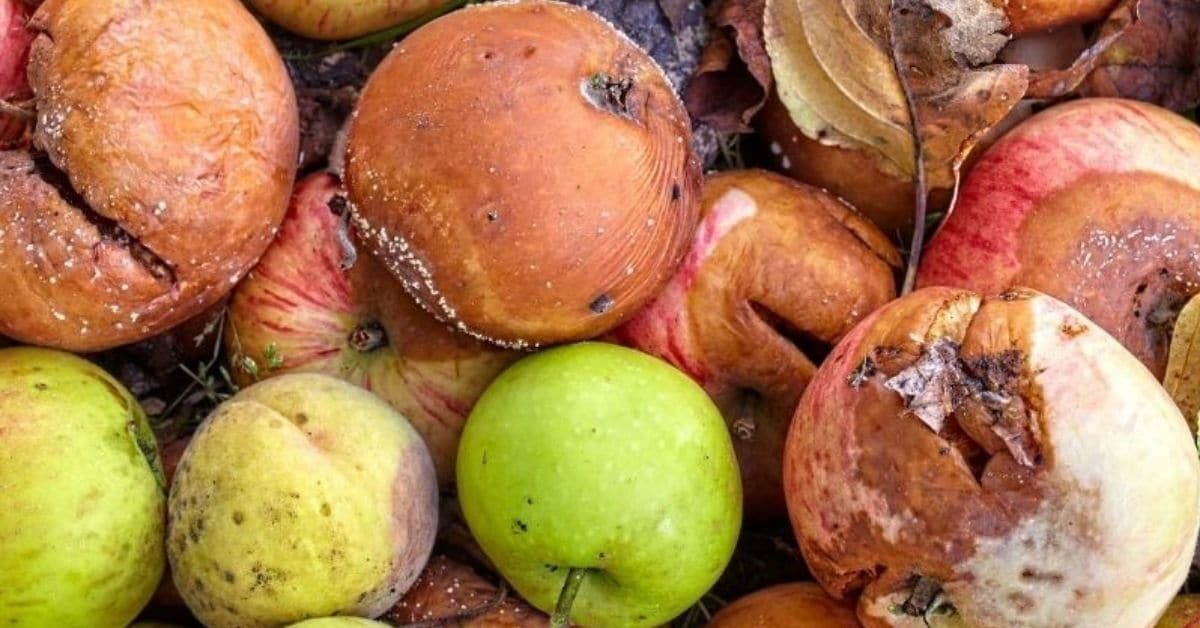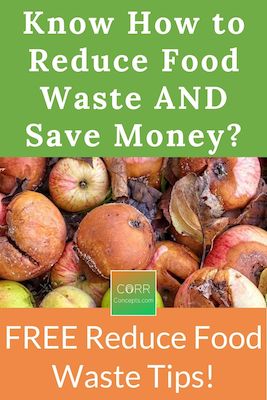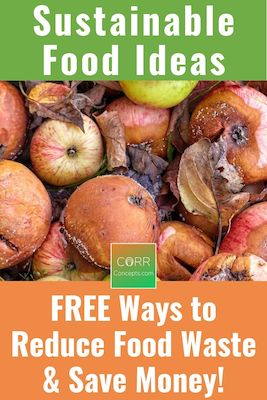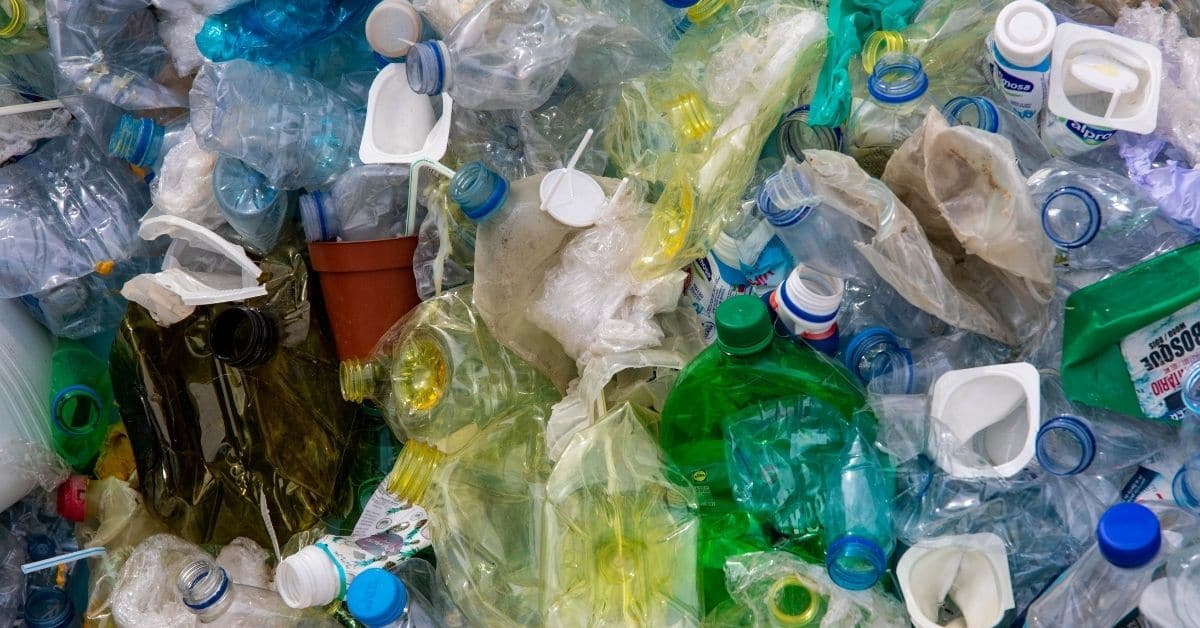Why reduce food waste in your home? Experience the financial and environmental benefits for you and your family with these easy, if not free, ways to reduce food waste and save money.
Like this? Share it with others!
This post contains affiliate links. My preference is to provide links to companies other than Amazon whenever possible. I recognize many people like Amazon, not to mention there are eco-friendly, ethical, and sustainable brands out there who use Amazon. I want to support them. So, just know you may see multiple links for one option. Should you make a purchase through these links, I will receive a small commission at NO additional cost to you. See my Disclaimers & Disclosures and Privacy Policy for more information.
Why Food Sustainability is Important
Food production, distribution, and consumption play a critical role in the health of our environment, society and economy.
If food is not produced sustainably, our croplands and natural resources, like water, will not be able to keep up with the demand of food with an ever-growing human population.
Currently, there are already millions of Americans without access to the healthy food that is produced, and Americans are throwing out billions of pounds of perfectly good food annually contributing to food insecurity and environmental degradation.
Read more about food sustainability and why it is important.
Why Reduce Food Waste?
8.7 million U.S. families experienced food insecurity in 2018. Today, 1 in 6 Americans go hungry every day.
At the same time, over 1,100 pounds of food is thrown away by the average American family of four annually (equal to over 2 pounds per person per day).
This translates to over 40% of food produced in the U.S. is wasted. That’s $165 billion worth of food waste annually. If not wasted, this food could serve over 58 million meals. Every year.
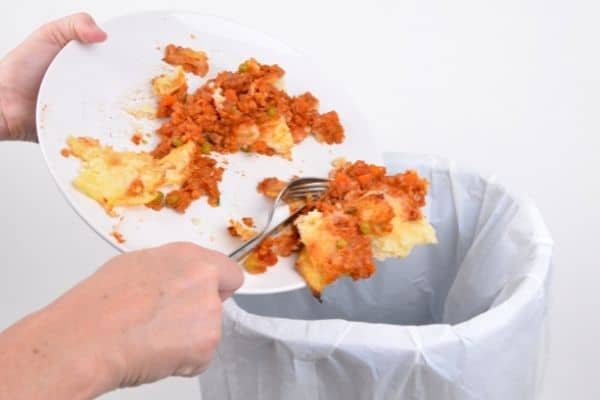
This does not include the environmental component. When Americans waste that much food, it means 19% of our croplands and 21% of water is wasted to make food that will not get eaten. Therefore, that uneaten food sits in landfills producing methane and other harmful greenhouse gases needlessly.
See the following graph from the NRDC explaining further.
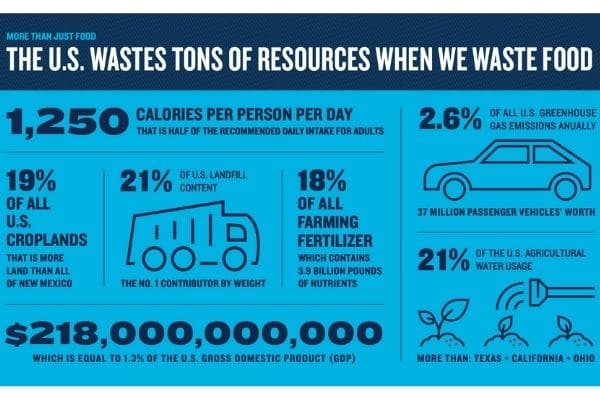
Therefore, it’s easy to understand that we have a food crisis in America, and eliminating food waste is a key component of achieving food sustainability and eliminating food insecurity. It would also save U.S. families a lot of money.
You’ll Also Like
19 Ways to Reduce Food Waste and Save Money
Check out these easy, if not free, 19 ways to reduce food waste and save money for your more sustainable lifestyle.
Food Shopping
1 – Shop Only for What You Need
The biggest rule in reducing food waste is do not over-buy, or impulse-buy, and use the food that you do buy. Simple, huh? Yah, you’d think so. Most people need help with how to do this.
The easiest way is to do this is to create your shopping list in advance.
If you’re still overbuying, experiment with the types of food you buy, track how long they last, and adjust your shopping accordingly. Alternatively, you can try a meal planning app to keep you on track.
If you buy in bulk, which is great for reducing plastic waste and packaging, be careful. Start with small amounts and shop the ‘Use By’ date. Ask the store if that date is not visible. Of course, bring your own light-weight, reusable containers with you when you shop for bulk food.
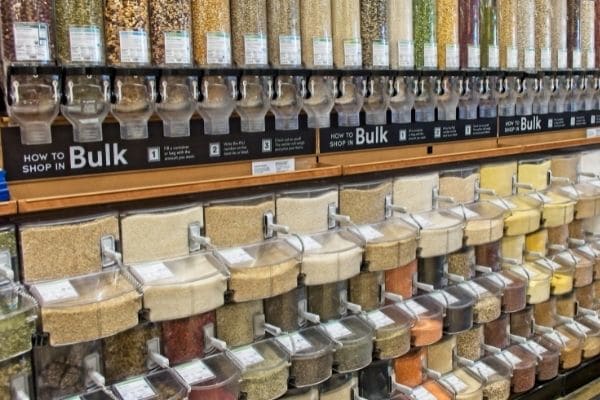
2 – Shop Ugly Food
You ever notice that your grocery store produce always looks shiny and perfect? There’s a reason for that. The USDA classifies how a piece of produce looks and stores sell only certain classifications.
What about all of the other produce that doesn’t look so pretty? It normally gets thrown out when it’s picked. This is perfectly good food that never makes it to the store simply because of its looks.
Some larger store chains, like Walmart and Whole Foods, are catching on and offering ‘ugly food’ to consumers to eliminate this food waste.
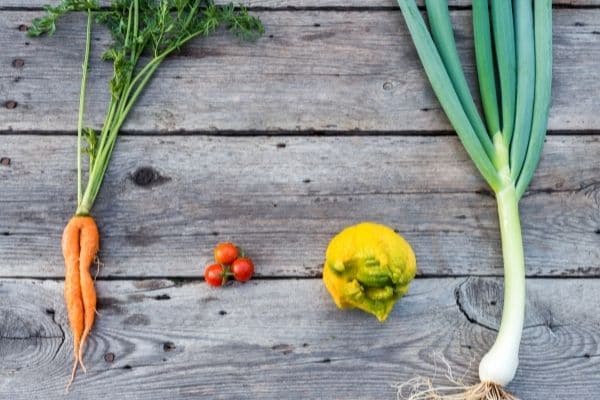
However, there are stores out there where ugly food is their entire mission, like Misfits Market, who delivers it direct to your door. There are also food manufacturers who only use ugly food to make their drinks and snacks.
Check out those food manufacturers on Upcycled Food Association’s web page to see who is Upcycled Certified.
3 – Sell-By vs. Best-By vs. Use-By Dates
Ok, this is a biggie and causes a lot of confusion for consumers.
To make it as simple as possible without skimping on key information, know that these “Sell-By”, “Best-By” and “Use-By” terms are not regulated by the U.S. government. The NRDC did a policy brief that examined, “the historical impetus for placing dates on food—namely a desire to indicate products’ freshness”.
The NRDC found that the lack of federal standards and differences between state and local labeling rules not only leads to inconsistent labeling practices but creates confusion for the consumer that simultaneously, “leads to considerable amounts of avoidable food waste, as the mistaken belief that past date foods are categorically unsuitable for consumption causes consumers to discard food prematurely.”
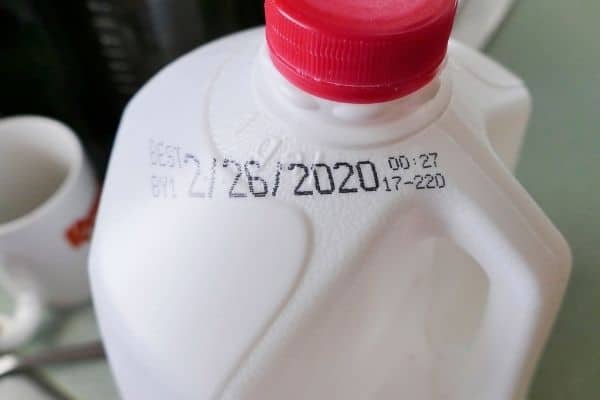
The skinny from the USDA on product dates is as follows:
- “A “Sell-By” date tells the store how long to display the product for sale. You should buy the product before the date expires.
- A “Best if Used By (or Before)” date is recommended for best flavor or quality. It is not a purchase or safety date.
- A “Use-By” date is the last date recommended for the use of the product while at peak quality. The date has been determined by the manufacturer of the product.
- “Closed or coded dates” are packing numbers for use by the manufacturer.”
Don’t be afraid to use your nose to judge a product’s usefulness. When in doubt, consume (or freeze) the product by the “Use-By” date.
4 – Shop Locally
Support your local farmers and buy locally whenever possible.
The shorter distance your food has to get to you means the longer it will stay fresh and edible. It also means less transportation costs and pollution, which cuts down on global warming.
A lot of farmers participate in Community Supported Agriculture (CSA) programs that allow consumers to shop directly with farmers for fresh and season food. Find a CSA in your area, or an Upcycled Food program, that delivers fresh produce directly to you.
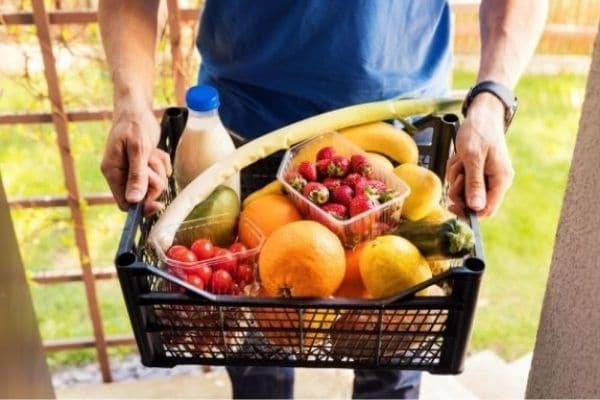
Food Prep and Cooking
5 – Eat the Whole Thing
A lot of food is wasted peeling off the skins of fruits (e.g., apples and kiwis), vegetables (e.g., carrots, cucumbers and potatoes), and meats.
These skins provide taste and nutrients beneficial to us. This can also be said for eating the whole egg, not just the egg whites. Egg yolks have nutritional value as well.
Instead of peeling or throwing away the ends, consider saving the vegetable ends of onions, celery and carrots to make a homemade veggie broth or use the chicken carcass for homemade bone broth.
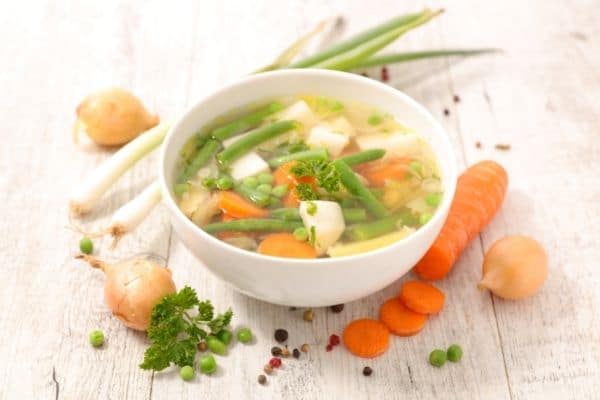
Same can be said for fruits. Those ‘unwanted’ pieces can be a nice flava flave in your water or a fruity addition to your smoothie.
After all, the more creative ways to reduce food waste, the more food for consumption, and the less you have to buy.
6 – Save the Seeds
Everyone loves Halloween and cutting open pumpkins for Jack o’ Lanterns, but what happens to all of that pumpkin waste? People throw it out.
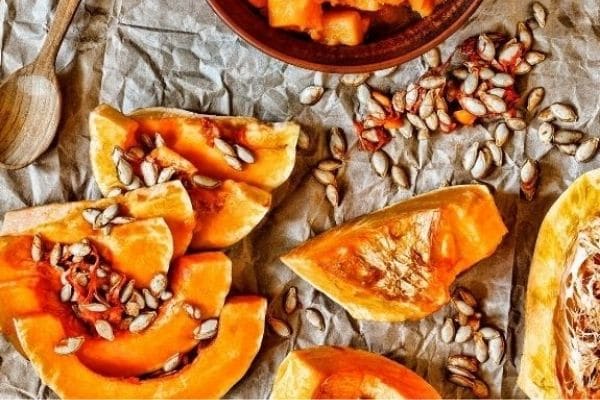
In fact, most seeds get thrown out, like tomato, pumpkin, apple, orange, and squash seeds.
Why not save them and use them in the garden?
Another way to use them is in your meals or making snacks. Here is a great roasted squash seed recipe your family will love.
7 – Cook for Leftovers
Cooking is a wonderful activity to do alone or with family. Many cultures embrace cooking and know that a family that cooks and eats together, thrives together.
Did you also know that cooking for food later (known as “leftovers”) are a great way to reduce food waste?
Don’t be afraid to make a little more and store it as your next meal. This not only saves you time from having to cook again, but also saves energy on running your appliances again – another money saving bonus.
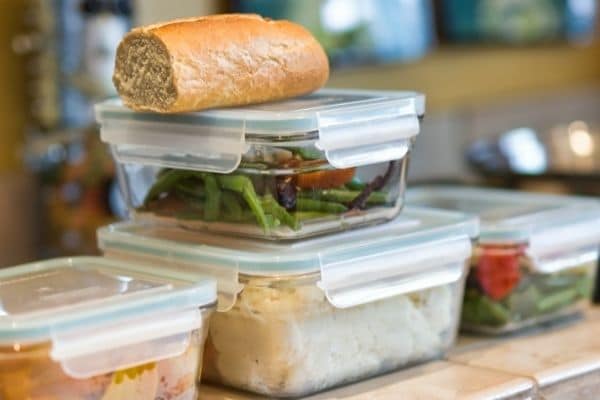
8 – The 2-Hour Rule
Unless kept chilled or warmed, avoid leaving perishables sitting at room temperature for more than 2 hours. Also, refrigerate leftover within 2 hours of preparation.
9 – Pack Your Lunch and Snacks
Often times, packing your own meals for work or school reduces food waste. You’re more in tune with what food, and how much, you have so you’re apt to waste less.
Packing your own school or work lunch is another easy way to use your leftovers and, of course, saves money on buying lunch.
For even less waste, use eco-friendly food containers.
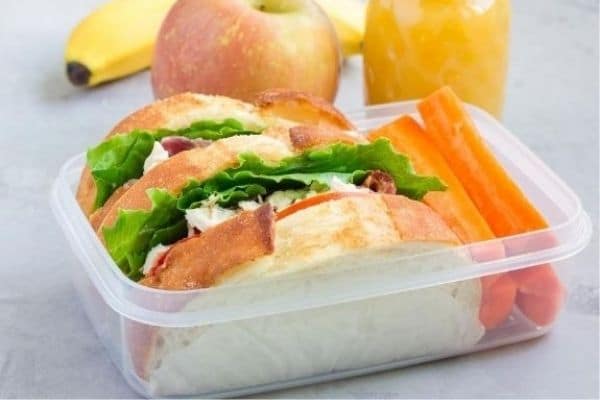
10 – Can or Preserve Food
If you have the time, try your hand at popular food preservation methods: canning, curing, fermenting, pickling, freezing, drying and/or dehydrating.
There are many online sources for help and tips and materials.
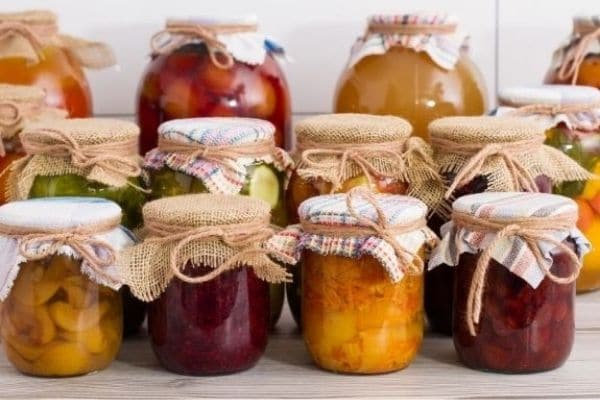
Store Food the Right Way
Proper food storage is another free way on how we can reduce food waste and save money.
11 – Keep Your Kitchen Clean
I’m not talking about mopping floors or doing dishes. Periodically going through your food storages makes sure you don’t miss food that could go bad.
Refrigerator and Freezer Food
Peruse your refrigerator and freezer weekly and clean them regularly so you’re not missing any food about to go beyond edible.
If need be, keep a food calendar of what’s in your fridge and freezer so food is not lost by age or freezer burn.
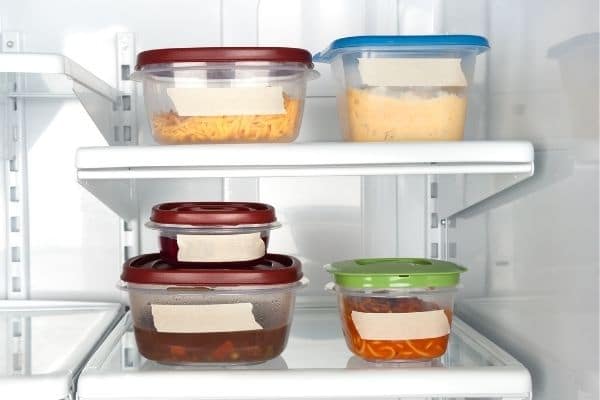
If you don’t have a top-of-the-line refrigerator, get a couple of inexpensive refrigerator/freezer thermometers so you know which areas inside are cooler or warmer for proper food storage.
For energy savings, keep the refrigerator no lower than 38-40°F (around 3-5°C) and the freezer no lower than 5°F (around -15-18°C).
If you can’t seem to eat that fridge item in time, consider freezing it before it has a chance to go bad. Same can be done with a combination of foods – mix them together for a soup or chili to freeze for later.
CORR Tip
As a single person, there’s no way I can go through my mixture of fresh berries from the farmer’s market in time before they spoil. I love to keep a small portion of the fresh berries set aside in the fridge and freeze the rest. I simply pull out a portion the frozen berries I know I’ll use each week.
Need help knowing how long each type of food will store? The FoodKeeper App is easy to use for help on storing shelf, refrigerated, or frozen foods.
Keep your freezer and fridge organized so foods are grouped by type, making it easier not to miss those leftover mash potatoes behind the jar of mayo. Labeling food with dates is also super helpful.
Store prepped food and leftovers in clear, glass containers so you can see the food and not forget it’s there.
Cabinets
Do the same for your longer-storage foods in cabinets. Store items by shelf life so the new expirees are in front. In other words, first in, first out.
12 – Get to Know Your Food
Not all food is stored equally. Some may require storage methods different from others to provide you the longest lasting freshness. Therefore, learning how to store fruits, vegetables and legumes can make your grocery list go a long way.
Additionally, grouping produce can make or break how long produce may last. Some fruits and vegetables emit ethylene, a natural plant hormone released in gas form, that can cause produce to degrade quicker.
Get to know those foods that produce ethylene so you can store them properly.
Try Out Your Green Thumb
13 – Indoor and Outdoor Gardening
Gardening is an educational experience for the entire family.
Having your food at your fingertips not only ensures freshness, but eliminates the need to use the car to go to the grocery store, sparing the air from greenhouse gases and saving on gas money.
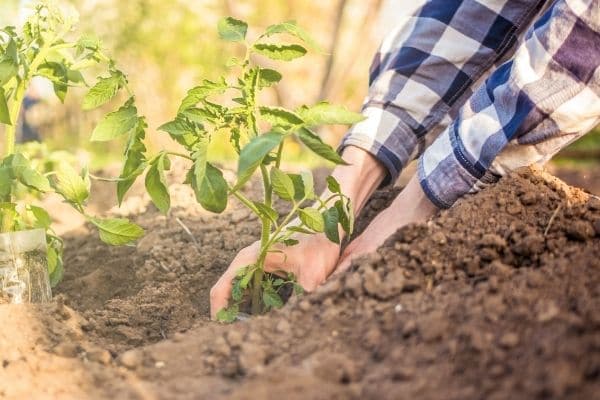
If you don’t have a yard, try growing herbs and smaller veggies, like scallions, in small gardening pots on your deck, windowsill, raised gardening bed, or use an indoor gardening kit.
Dining Out
14 – Keep Eyes Smaller Than Your Stomach
Order only what you’ll eat while dining out. Order smaller portions and avoid restaurants that serve extra-large portions.
If you’re not dining alone, consider sharing a meal. It’s a great way to save money.
15 – Take Home the Doggie Bag
Still can’t finish your meal or prefer to have restaurant leftovers? Like shopping, bring your own small, reusable, eco-friendly container (just in case) to bring your leftovers home with you so the restaurant doesn’t throw them in the trash can.
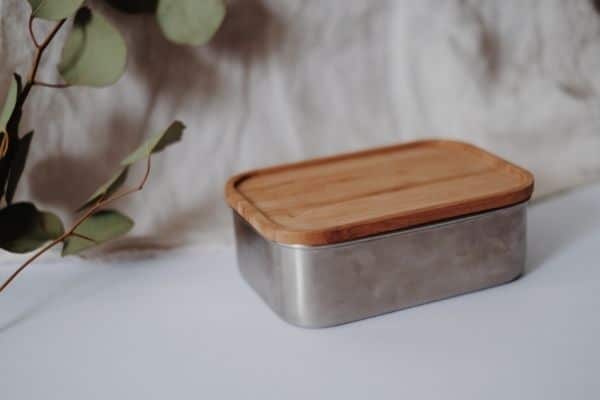
16 – Bypass the Buffets
Avoid the “all you can eat” buffet. Buffets are notorious for producing wasted food. People think they have to get their monies’ worth so they pile up on food they never finish that ends in the trash can.
17 – Inspire Food Donations
Get your favorite restaurants to donate their unused food to local food banks and homeless shelters. Contrary to belief, there are no legal implications to donating food. Thanks to the Bill Emerson Good Samaritan Food Donation Act, you cannot be held liable (sued) for donating food in good faith.
It’s Not Over ‘til It’s Over
18 – Reuse Food Scraps
As stated above, making your meals cuts down on food waste, and saves money, but what do you do with the food waste items you can’t store as a leftover?
Foods like these are typically coffee grounds, egg shells, tea bags, and the like that get overlooked for other uses.
Reusing Coffee Grounds
Coffee grounds aren’t just grounds. They are fertilizer with yummy nitrogen, phosphorus and potassium plants crave.
Coffee grounds can also be a natural mosquito repellent. Cool, huh?
Reusing Egg Shells
Some people find clever uses for egg shells. I’ve heard them being ground up fine and given to dogs to get rid of their diarrhea. I’ve also heard them being used in the garden to promote calcium in the soil.
Just keep your egg shells in a container in the refrigerator (to dry them out) and when dry, throw them into the blender and use at will.
If you don’t want to do that, merely toss them into your countertop compost bin.
19 – Compost Food Scraps
Don’t worry if you don’t want to reuse your coffee grounds, egg shells or other food waste. You’ll still make a positive impact on reducing landfill waste and the greenhouse gases they emit by simply composting your food waste.
Your composting will not emit methane gas, and it can be used as fertilizer in your indoor or outdoor garden.
Composting is a beneficial way for food waste to become energy for plants by help plants fight diseases and pests.
Like gardening, you don’t have to have a yard to compost. There are many kitchen composting systems, like food recyclers, as well as outdoor systems, like compost tumblers, that are easy to use, making composting a very doable, environmentally-friendly way to reduce food waste and save money.
Let Me Hear From You
I would love to hear if any of these 19 ways to reduce food waste worked for you. Post me your thoughts or questions in the Comments section below. Thank you!
Like this? Share it with others!
MORE SUSTAINABLE FOOD & ZERO WASTE POSTS YOU’LL LIKE
What Plastics Can Be Recycled?

Gwen, CORR Concepts Founder
Gwen is a Sustainability professional with an MBA in Sustainable Enterprises and LEED AP ID+C accreditation from the GBCI. She is also the Founder of CORR Travel. As a Sustainability professional and Earth Steward, environmental sustainability and biodiversity protection is her “religion”. Travel is her passion.

